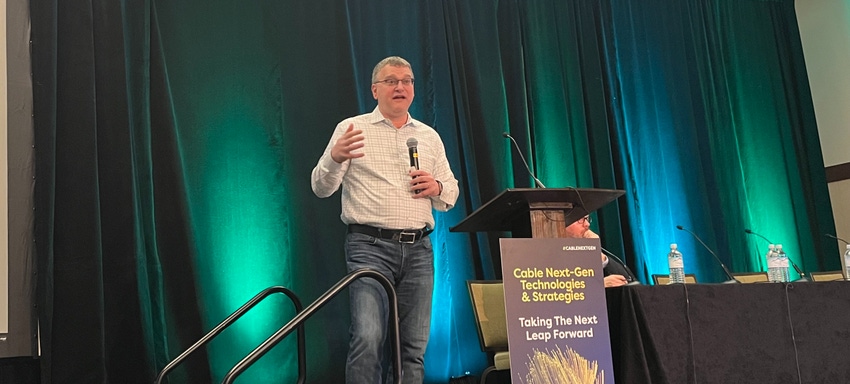Comcast's Nafshi says DAA is critical step in DOCSIS 4.0
Comcast has deployed more than 140,000 digital access architecture (DAA) nodes throughout its network as it moves toward DOCSIS 4.0 technology.

CABLE NEXT GEN – DENVER – Don't underestimate the value of distributed access architecture (DAA) and the role it plays in DOCSIS 4.0. That is the advice Comcast Cable's EVP and Chief Network Officer Elad Nafshi provided to attendees at the Cable Next-Gen Technologies and Strategies Conference here today.
"You need to get DAA launched right before you launch 4.0. This is really hard. If you think 4.0 is plug and play, it is not," Nafshi said.
Comcast has deployed D4.0 in three markets – Philadelphia, Atlanta and Colorado Springs – and plans to expand to more markets this year.
Nafshi said D4.0 is performing "fantastic" in those initial markets and delivering 2 Gbit/s symmetrical speeds. But he also warned his peers that they need to make sure they invest in real-time visibility and automation in their networks before they deploy D4.0. Otherwise, they will be plagued with trouble calls and truck rolls. "This is a great opportunity, but you need to take your time and make sure you have invested in real-time visibility and automation and make it repeatable," he said.
Nafshi provided some additional details on how Comcast is transforming its network and incorporating key elements like disaggregation and virtualization. Interestingly, Nafshi said that the company has been working on disaggregation of the network for the past six years, and aims to achieve it through its entire network.
This includes expanding the company's CCAP cable modem termination system (CMTS) to 1,400 locations and its virtual CMTS to 200 locations. In addition, Comcast has more than 1,000 vCMTS physical points of deployment (PPODs). "We are now running more virtualized servers than Netflix is globally," Nafshi said.
This not only helps streamline the network but also reduces power consumption. Nafshi said that Comcast has already reduced power consumption by 36% and is on its way to achieving carbon neutral status by 2035. "This is how end-to-end network transformation comes together," he added.
However, not all cable operators are able to move full speed ahead on D4.0. According to Chris Bastian, former SVP and CTO at SCTE, few operators are able to move at the scale that Comcast is, and many are picking and choosing different technologies that they can deploy. "Few are going full scale. Everyone is on a different path," he said.
That sentiment was echoed by Victor Esposito, CTO at Ritter Communications. Ritter is upgrading some of its systems with the intention of setting itself up to successfully launch D4.0. "We are future-proofing and setting ourselves up for the D4.0 launch," he said.
But most agree that DAA is a necessary step to take before moving to D4.0. "We saw operators really start to deploy DAA in a significant manner," said Jay Lee, CTO and CSO of broadband access at ATX. "It's essential for 10G services in a D4.0 architecture."
About the Author(s)
You May Also Like












